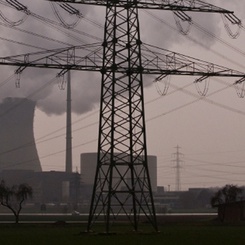For almost two decades, governments around the world have been trying to create more competitive electricity markets through various regulatory policies. Regulators want to increase competition, control prices and prevent monopolies, ultimately benefiting the consumer. They aim to achieve this through two types of intervention: changing market structure by forcing companies to sell assets (preventing them from becoming too large and dominant), and changing behaviour with tactics such as capping prices, restricting the market share - a single company can control and setting capacity targets (to prevent firms withdrawing capacity in order to drive up prices).
Behavioural interventions are generally easier to carry out than restructuring the market, which runs counter to ‘competitive market’ principles. However, firms react to each intervention, like living things adapting to their environment, which can mean that further measures are necessary. Electricity markets as a whole evolve through the dynamic interplay of regulators’ actions and firms’ reactions to them. Our main objective in this paper is to analyze the impact of regulatory interventions on the evolution of market structure. The computational model presented in the paper can be used both by regulators and generation firms to study the possible long-term impacts of regulatory interventions.
Trading Game
One way to understand this strategic evolution is as two interlinked ‘games’: an electricity market game, where firms try to get the best possible price for their electricity in competition with each other, and a plant trading game, where they can trade assets with each other. Regulators do not play in either game; they set the rules, representing the interests of the electricity consumer and trying to prevent electricity firms ‘winning’ by becoming excessively profitable or powerful.
The electricity market game generally works in one of two ways: either firms sell their power at a single price point, with all available power put into a pool (also known as ‘single clearing’), or there are multiple price levels (to deal with peaks in demand) and firms can choose who to sell to in an exchange (also known as ‘bilateral trading’). Companies ‘win’ in the electricity market game by selling their power at the best possible price, which involves them getting the most from their assets (their power plants). Regulators, for their part, want to help consumers by encouraging competition between players, which keeps down prices.
Not all power-generation plants are the same; they differ in terms of capacity and technology. More capacity means more revenue, while technology can help firms meet peaks in demand, and therefore succeed in bilateral trading. Also, firms differ in their abilities; one may be able to get more value from a particular plant than another. Therefore, one way that firms attempt to gain advantage in the electricity market game is by trading plants between each other. If a firm can realise more value from a competitor’s plant by getting a better price in the electricity market, it might be interested in buying it. The competitor, for their part, would probably sell the plant if they are offered more than they believe it is worth. This is the basis of the plant trading game, where companies respond to market demands by trying to optimise their assets and build the most valuable portfolio. Building a better portfolio often involves growing by buying smaller competitors, so regulators are anxious to limit this to prevent market concentration (monopolies or market dominance by a few players).
We were interested in analysing the effects and efficacy of two behavioural interventions in electricity markets: controlling production by imposing a minimum generation requirement (MGR) on each firm, and constraining the market share that they were allowed to attain. To look at this, we simulated the plant trading game in a computational model, and applied it to the electricity market in England and Wales as it was in 2000. At each ‘turn’ in the game, firms can identify plants they could potentially buy and decide whether they are worth buying (that is, whether they would increase the value of their asset portfolios). If the plant is valuable enough, the price is right and the seller is willing, the transaction is completed. However, if potential buyers’ valuations do not exceed the valuations of plants’ current owners, no trading occurs and the market is said to be in ‘evolutionary equilibrium’.
There are additional subtleties: players must make their decisions based on incomplete knowledge, and also take account of the effect of their actions (or inaction) on the beliefs and perceptions of other players. They choose the best response they can at the time, based on their understanding of how the market will evolve if they act or respond in a certain way.
As players in the plant trading game buy and sell plants from each other, the overall structure of the electricity market changes, with knock-on effects on total capacity and price levels. So the electricity market game provides the motive for plant trading, which in turn dictates the evolution of the electricity market; the two games are symbiotically linked. Meanwhile, regulators try to affect the outcome of both games in such a way that consumers benefit.
All this is represented by a set of equations: a mathematical model that, while complex and time-consuming to create and run, represents a highly simplified version of an even more complex reality.
Increasing the Power Generated
Using our model, we found that both regulatory measures are useful, but in different ways. They each have the effect of increasing the amount of power generated, which in turn reduces prices. The MGR on its own helps to stop firms deliberately withholding capacity to in order to push prices up, and it also makes it less attractive to buy smaller rivals, which helps to prevent too much concentration in the market. Constraining market share when an MGR is already in place has no significant effect beyond that already delivered by the MGR itself. Using market-share constraint on its own helps to reduce levels of concentration (in other words, ‘monopoly’ power is more evenly distributed among firms). However, its effect differs depending on the rules of the electricity trading game: in a pool or single-clearing game, prices and concentration are reduced more than in the exchange model. This has two implications: firstly, that prices may be generally higher in the ‘pool’ model, and secondly that regulators’ actions are more effective in this type of market.
Although it seems to reflect reality in a reasonably accurate way, our model is still limited. It only reflects certain aspects of reality: it is a map, not the territory itself. Nevertheless, policy-makers and energy companies can use it to understand the consequences of their actions more clearly.









